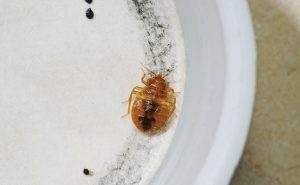
PHOTO: iStock.com/John-Reynolds
Over the last decade, bed bugs have become a key player in the pest control industry. Many pest management professionals (PMPs) are embracing these service offerings and finding that bed bug treatments can be both effective for clients and profitable for companies. While there are several bed bug treatment methods in play, some may not be an option for all PMPs due to their cost or resources.
There is one treatment option that can be utilized by almost any dedicated company though — conventional (pesticide only) treatments. In this context, conventional treatments refer to any bed bug treatment that utilizes pesticides and strategies other than heat. If your company does offer conventional bed bug treatments, there are a few things to consider ensuring you have the best chance of success:
STAFFING
One thing that I have found to increase the success rate of conventional treatments is to find the correct technician to provide the services. Clients pay a premium rate for bed bug treatments and should expect premium results. One way to avoid a bed bug service being short-changed is to have a dedicated bed bug technician.
If your company structure allows for it, limiting the number of technicians who perform bed bug treatments will ensure the services are done on a consistent basis. If a technician is constantly worried about getting to the next stop on their daily appointment list, the bed bug service could suffer. A quick bed bug treatment is never a blueprint for success.
PREPARATIONS
For any occupied unit (single family home, apartments, dorm rooms, etc.), there must be some level of preparation beforehand. Very few units are immediately ready for treatment. How do you decide what preparations need to be completed? The recent movement to the “minimal prep,” “low prep,” and/or “no prep” models have proven to be successful in my experience.
These approaches are beneficial for both the clients and the providers. From the client’s point of view, they are not turning their life upside down to prepare for a treatment. In many cases, standing up beds, pulling furniture from the wall, and bagging every piece of clothing seems excessive, especially with rooms or units that have a low-level infestation. Outside of these excessive measures, the long lists of preparation steps are also difficult for some households. Some clients may not be physically capable, may feel overwhelmed by the lengthy list, or they may just simply interpret the directions differently than a PMP would.
For the provider, the low-prep approach helps create an environment for treatment that is as close to how the unit typically is on any given day. If you can perform the treatment in its normal state, you will find more success in finding bed bugs where they have been harboring. Do your homework to see what preparation style best suites each situation, but this has been my experience.
SCOPE OF SERVICE
While every pest control company that offers bed bug services has their own way of doing things, the basic model of most conventional bed bug treatments consists of an initial service and a pre-determined number of follow-up visits. The contract that you use for the bed bug treatment should clearly outline the number of service visits included in your price. Some companies choose to charge the entire cost of treatment, including initial and follow-up visits, at one time. Others choose to offer a lower initial service cost with a price per follow-up visit. Whichever you choose, ensure that the client understands what they are paying for before the service begins.
The idea behind multiple service visits is twofold. It allows the treatment to have the best chance of success while also validating that we’re performing the best method of treatment. If we only provided a onetime treatment, there is no way to validate the service was successful. This could potentially lead to a call-back. With the scheduled follow up(s) in place, you will be able to see the progression of the infestation levels and can provide a validation to the client that the service is ultimately complete.
TOOLS
Each part of the conventional treatment process is equally important. As PMPs, we need client cooperation before and after the service. Clear communication, both written and verbally, need to take place. Aside from communication, the most important part of the service is the tools we are using. In order to achieve consistent success, incorporating multiple tools and strategies is imperative.
Start by choosing the correct pesticide(s) for the treatment. Do not rely solely on one product. Each situation is unique and requires a tailored treatment. Liquid residual, aerosol, and dust pesticides should be on-hand for each visit. In addition to traditional products, the industry has seen some great new additions including a long residual fungicide. I recommend talking with vendors about adding multiple products into your arsenal.
Second, use a vacuum. One of the most underutilized tools in bed bug treatments is a vacuum. Whether you’re dealing with an infestation of 10 bed bugs or 100, physically removing the bed bugs with a vacuum significantly increases your chances of success. Why should we rely on pesticide alone if we can immediately remove the bed bug from the environment? Our clients pay us to “get rid of the bed bugs” and a vacuum is the easiest way to do this.
Third, installing bed bug proof mattress and box spring encasements can make a huge impact. Once installed, these bed covers will trap any live bed bugs and eggs inside. Encasements can also reduce the amount of pesticides that are needed to be applied, saving the client from disposing their beds. When choosing bed covers, do not go cheap. The last thing you want is a cover that rips easily. Look for a good quality encasement with a locking zipper that is labeled for bed bugs. An added benefit of encasements is their ability to act as monitoring devices. Bed bug fecal evidence is visible on the outside of these covers and that will help determine if activity is still occurring.
Offering bed bug services is not for every company. If this is part of your service portfolio, make sure that your approach is being re-evaluated on an annual basis. One of the best things you can do is to have as many tools, products, and strategies at your fingertips ready to implement at any time. Be flexible and open-minded to improve your service and keep the integrity of it as your highest priority.

Jared Woerth
WOERTH is the special services manager at Wil-Kil Pest Control. He started at the company in 2010, starting as the company’s original heat treatment technician. Now, he oversees the heat treatment and canine scent detection teams. He served on the Board of Directors for the Wisconsin Pest Control Association (WPCA) from 2014-2020.
Leave A Comment